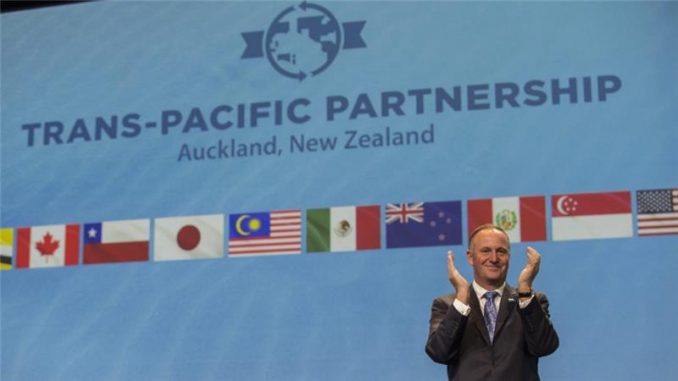
The administration of US President Barack Obama is moving into its final three months in office and the trajectory of one of its signature foreign policy initiatives – the US “rebalance” to the Asia-Pacific – remains unclear.
Washington’s inability thus far to ratify the Trans-Pacific Partnership (TPP) trade deal – a 12-country deal that encompasses nearly 40 percent of the world’s gross domestic product – has its friends and partners in the region concerned about its long-term commitment to the Pacific.
Unease in Asia
In August, Singapore’s Prime Minister Lee Hsien Loong bluntly referenced this uneaseduring his trip to Washington: “For America’s friends and partners, ratifying the TPP is a litmus test of your credibility and seriousness of purpose [in the Asia-Pacific].”
Lee further stressed that the United States could not achieve its aims in Asia through a security-centric posture: “It will add substance to America’s ‘rebalance’, which cannot just be about the military, or the 7th Fleet.”
Japan, one of Washington’s most important allies in the region, has also urged the US to follow through on the TPP.
Japan’s Prime Minister Shinzo Abe recently visited the US to attend the United Nations General Assembly meetings and indicated that: “Through the TPP, the US can make clear its commitment to playing a leadership role in the growing Asia-Pacific.”
Abe, who also met Democratic presidential hopeful Hillary Clinton to press her on supporting the TPP, then outlined the stakes: “Success or failure will sway the direction of the global free-trade system, and the strategic environment in the Asia-Pacific.”
Ratification of the TPP during the “lame-duck” session of Congress – after the election in November and before Obama’s successor takes over in January – remains a possibility.
Despite this however, the window for finalising the deal is closing, and political opposition from both presidential candidates has further complicated the White House’s elevator pitch to Congress.
Enters the RCEP
Aside from damaging US credibility in the region, the slow-drag on the TPP is turning the attention of some in the region back to trade possibilities with China.
The most ambitious multilateral competitor to the TPP is the Chinese-led Regional Comprehensive Economic Partnership (RCEP).
One of the key reasons why RCEP has failed to gain traction over the past few years is the political capital that most RCEP members – including Japan, Australia, New Zealand, Singapore and Vietnam – devoted to finalising the TPP after rounds of gruelling negotiations.
While many members overlap between the TPP and RCEP, the most striking difference is the absence of the US in the latter – along with other large economies such as Canada.
The RCEP agreement, which has 16 members with nearly a third of global GDP, has thus far been slow going, with negotiations dragging since discussions on the pact launched in 2012.
One of the key reasons why RCEP has failed to gain traction over the past few years is the political capital that most RCEP members – including Japan, Australia, New Zealand, Singapore and Vietnam – devoted to finalising the TPP after rounds of gruelling negotiations
RCEP includes other big economies in Asia that are currently outside the TPP, including India, South Korea and Indonesia.
While this wide network of key regional economies makes the pact attractive, it also is sure to lessen its standards and comprehensiveness – a watermark of the TPP.
Indeed, as President Obama has stated on numerous occasions, finalising the TPP would ensure that Beijing “doesn’t get to write the rules” on trade and commerce in the region.
Significant Hurdles
Despite the positive movement, however, RCEP still faces significant hurdles. Members of the deal remain at loggerheads over cuts on goods tariffs and have yet to agree on other key areas including e-commerce and intellectual property rights.
Moreover, RCEP faces different challenges with the inclusion of India and Japan – neither of which has a free trade agreement with China. This makes negotiations more difficult as both sides are more or less breaking new ground (despite the fact that Japan is also simultaneously engaged with China on a trilateral free trade agreements with South Korea).
ut while the US may frame this as a China trade pact – the reality is that RCEP is centred on the Association of South East Asian Nations (ASEAN) – with all 10 members involved.
Indeed – all of the other members (Japan, China, India, South Korea, Australia and New Zealand) already have free trade agreements with ASEAN.
The RCEP therefore is more of a web of all of these free trade agreements together (ASEAN 6), along with the inclusion of new potential deals among the non-ASEAN members.
RCEP’s obstacles are not impossible to overcome, especially due to the fact that the deal – without Washington – has lower expectations on standards than the TPP.
Also, the current slow-dance in RCEP negotiations may change significantly if it becomes clear that the TPP will not be ratified in the coming months and is instead punted to Obama’s possible successor – both of whom have slammed the deal.
RCEP lead negotiators had originally pledged to conclude a deal by the end of this year, but it now appears that this was overly ambitious.
RCEP members will hold their 15th round of negotiations next month in China and look to bridge the gap and work towards concluding a deal likely sometime next year.

Leave a Reply